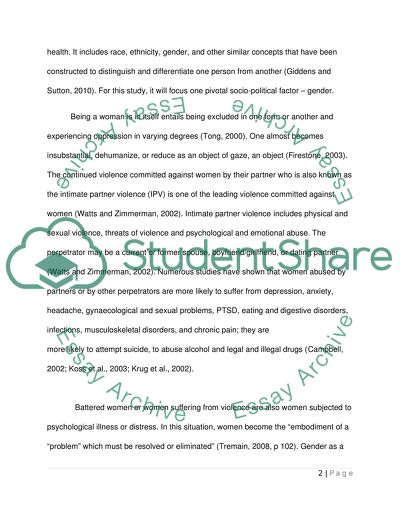Cite this document
(“Women, Violence and Mental Illness Essay Example | Topics and Well Written Essays - 1750 words”, n.d.)
Women, Violence and Mental Illness Essay Example | Topics and Well Written Essays - 1750 words. Retrieved from https://studentshare.org/nursing/1443382-with-reference-to-course-literature-discuss-how
Women, Violence and Mental Illness Essay Example | Topics and Well Written Essays - 1750 words. Retrieved from https://studentshare.org/nursing/1443382-with-reference-to-course-literature-discuss-how
(Women, Violence and Mental Illness Essay Example | Topics and Well Written Essays - 1750 Words)
Women, Violence and Mental Illness Essay Example | Topics and Well Written Essays - 1750 Words. https://studentshare.org/nursing/1443382-with-reference-to-course-literature-discuss-how.
Women, Violence and Mental Illness Essay Example | Topics and Well Written Essays - 1750 Words. https://studentshare.org/nursing/1443382-with-reference-to-course-literature-discuss-how.
“Women, Violence and Mental Illness Essay Example | Topics and Well Written Essays - 1750 Words”, n.d. https://studentshare.org/nursing/1443382-with-reference-to-course-literature-discuss-how.


